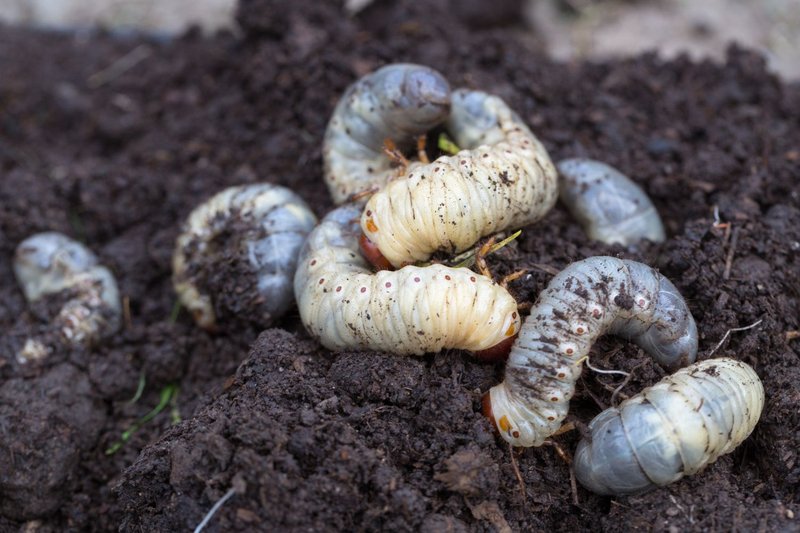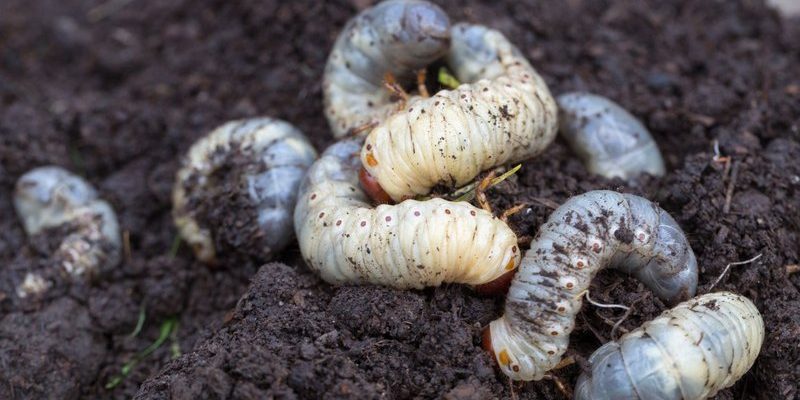
Picture your lawn as a beautiful garden, a vibrant space where your kids play and you relax on sunny days. Now imagine discovering those unsightly brown patches and thinking, “Uh-oh, it must be those grub worms!” But not so fast! Before you start treating your yard for pests, let’s clear up some of the confusion surrounding grub worms and lawn browning.
What Are Grub Worms, Anyway?
Grub worms are the larvae of various beetles, including Japanese beetles and June bugs. You might find them lurking just below the surface of your lawn, munching on grass roots and causing damage. They tend to thrive in warm, humid conditions, making summer their prime time for causing havoc in your yard.
Here’s an interesting fact: not all grubs are created equal. Some types are more destructive than others, and the extent of their damage can vary. You might be surprised to learn that just because you spot a few grubs in your soil, it doesn’t necessarily mean you’re facing a full-blown infestation. Remember, grubs are a part of the ecosystem, and a few might not hurt your lawn at all.
Common Myths About Grub Worms and Lawn Browning
When it comes to grub worms, a lot of myths are floating around. One popular myth is that all brown patches in your lawn are caused by grubs. While grubs can contribute to lawn damage, there are many other factors at play, like drought, overwatering, or even a lawn disease. You’ll want to consider these possibilities before jumping to conclusions.
Another myth is that every lawn treatment will get rid of grubs. While some treatments can be effective, they’re not all created equal. Some methods only target specific types of grubs, and others might not work at all if the conditions aren’t right. Think of it like a one-size-fits-all shirt; it doesn’t always fit perfectly for everyone.
How to Identify Grub Damage
Now that we’ve debunked some myths, how can you tell if grub worms are truly causing your lawn issues? An important sign is whether the grass feels loose when you tug on it. Grubs eat the roots, so if your grass pulls up easily, you might have a grub problem.
Another thing to look for is the presence of small animals in your yard. Birds, skunks, and raccoons love to dig up grubs for a tasty snack. If you notice these critters frequenting your lawn, it’s a good indication that grubs are present.
Also, keep an eye out for more serious signs, such as patches that turn brown and die off, often resembling large areas of drought stress. These can be the telltale signs of grub damage—just make sure to rule out other issues first.
Preventing Grub Infestations
Prevention is always better than cure, right? While you can’t eliminate grubs completely, you can take steps to minimize their impact on your lawn. Here are a few tips:
- Maintain healthy grass: A thick, lush lawn is less inviting to grubs. Regularly mow, water, and fertilize to keep your grass strong.
- Consider a beneficial nematode treatment: These tiny worms are natural predators of grubs and can help keep their population in check.
- Keep lawn debris to a minimum: Fallen leaves and other organic matter can create a cozy environment for grubs to thrive.
By taking these preventive measures, you can create an environment that discourages grub infestations and keeps your lawn looking its best.
When to Seek Professional Help
If you’ve spotted signs of grub damage and your DIY efforts aren’t bringing results, it might be time to call in the pros. Lawn care specialists have the tools and knowledge needed to thoroughly evaluate your lawn and recommend effective treatments tailored to your specific situation.
They can conduct soil tests to determine the health of your grass and check for other potential problems, like diseases or pests. Plus, they can apply targeted treatments to ensure that grubs—and whatever else might be bothering your lawn—are dealt with correctly.
Understanding grub worms and their role in lawn browning can be a bit like navigating a maze. While they might be part of the problem, they’re often not the sole cause of your lawn’s distress. Remember to consider other factors, like watering habits, soil health, and even lawn diseases.
By being informed and proactive, you can keep your lawn thriving and reduce the chances of grub-related browning. Grub worms might be small, but with the right knowledge, you can tackle their impact effectively. Your lawn is a reflection of your care, so let’s keep it green and healthy!

